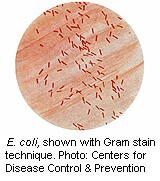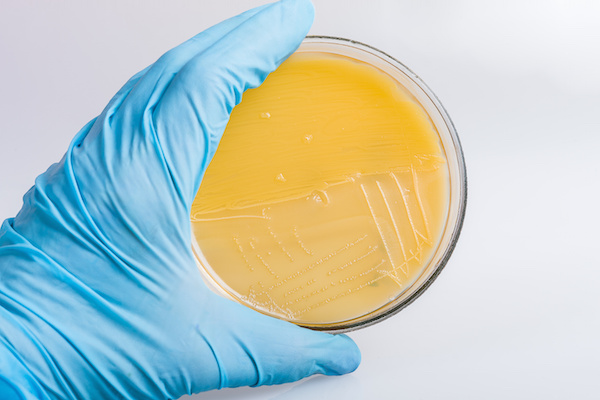
WEDNESDAY, June 22 (HealthDay News) — The strain of E. coli bacteria that this month killed dozens of people in Europe and sickened thousands more may be more deadly because of the way it has evolved, a new study suggests.
Scientists say this strain of E. coli produces a particularly noxious toxin and also has a tenacious ability to hold on to cells within the intestine. This, alongside the fact that it is also resistant to many antibiotics, has made the so-called O104:H4 strain both deadlier and easier to transmit, German researchers report.
“This strain of E. coli is much nastier than its [more common] cousin E. coli O157, which is nasty enough — about three times more virulent,” said Hugh Pennington, emeritus professor of bacteriology at the University of Aberdeen in Scotland and author of an accompanying editorial published online June 23 in The Lancet Infectious Diseases.
Another study, published the same day in the New England Journal of Medicine, concludes that, as of June 18, more than 3,200 people have fallen ill in Germany due to the outbreak, including 39 deaths.
In fact, the German strain — traced to sprouts raised at a German organic farm — “was responsible for the deadliest E. coli outbreak in history,” Pennington said. “It may well be so nasty because it combines the virulence factors of shiga toxin, produced by E. coli O157, and the mechanism for sticking to intestinal cells used by another strain of E. coli, enteroaggregative E. coli, which is known to be an important cause of diarrhea in poorer countries,” he said.
Shiga toxin can also help spur what doctors call “hemolytic uremic syndrome,” a potentially fatal form of kidney failure. In the New England Journal of Medicine study, German researchers say that 25 percent of outbreak cases involved this complication.
The bottom line, according to Pennington: “E. coli hasn’t gone away. It still springs surprises.”
To find out how this strain of the intestinal bug proved so lethal, researchers led by Dr. Helge Karch from the University of Munster studied 80 samples of the bacteria from affected patients. They tested the samples for shiga toxin-producing E. coli and also for virulence genes of other types of E. coli.
That’s when they uncovered the strain’s use of shiga toxin and its propensity to adhere tightly to cells in the digestive tract. This tight bond between the bacteria and the intestinal cells ” might facilitate systemic absorption of shiga toxin,” the authors wrote, upping the odds that a patient might progress to the sometimes deadly hemolytic uremic syndrome.
The strain was also resistant to common antibiotics, specifically penicillins and cephalosporins. Luckily, it was susceptible to another class of antibiotics called carbapenems.
According to the New England Journal of Medicine study, severe cases involving the hemolytic uremic syndrome have occurred mainly among adults, predominantly women. In one medical center in Hamburg, 12 of 59 patients infected with the O104:H4 strain went on to develop the sometimes form of deadly kidney failure, according to a team led by Christina Frank, of Berlin’s Robert Koch Institute.
For their part, the authors of the Lancet study believe that the emergence of the new strain “tragically shows ” how E. coli can change and “have serious consequences for infected people.”
One outside expert agreed. Infectious disease expert Dr. Marc Siegel, an associate professor of medicine at New York University in New York City, said that “in this case the bug itself is more virulent and more transmissible.”
This is just part of how the bacterium develops to survive, Siegel explained. And these changes may well affect other strains of E. coli. “These bugs are becoming more virulent,” he said.
One culprit, according to Siegel, is the overuse of antibiotics in livestock. Dosing animals with large quantities of antibiotics can make bacteria such as E. coli resistant to the drugs, he said.
These bacteria can then find their way into produce via water contaminated with animal waste, Seigel added. From there, the pathogen need only find its way into a salad or other food to infect people.
More information
For more information on food borne illness, visit the U.S. Centers for Disease Control and Prevention.

